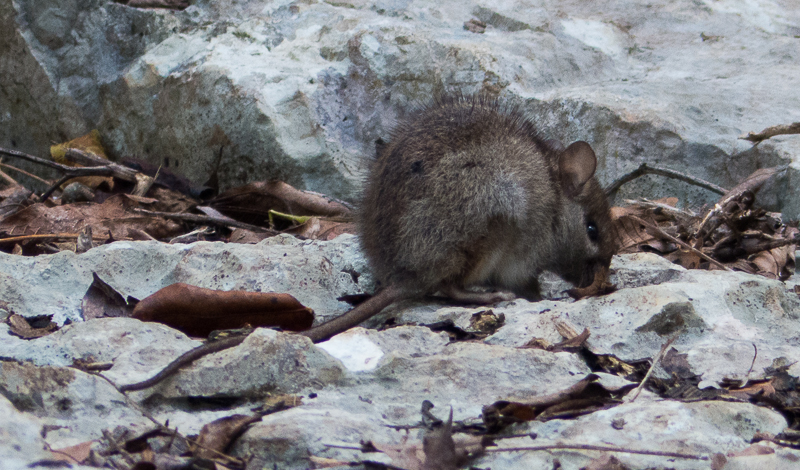About This Project
500 years ago the Conquistadors accidentally introduced black rats to the Caribbean. These rats are evolving unusually fast. They look different on every island, and on large islands there are types adapted to such environments as fields, rainforests, high mountains and caves. Cave rats are most interesting because they are apparently evolving exceptional visual capability. I am conducting the first study of them to understand how rats evolve so fast and develop seemingly impossible traits.
Ask the Scientists
Join The DiscussionWhat is the context of this research?
In the 16th century, the Spanish conquistadors accidentally brought black rats to the West Indies. In less than 500 years, these rats have colonized all islands and all habitats, including cities, mangroves, cloud forests and limestone caves. They now look very different on every island and in every habitat, and seem to be evolving into dozens of new species. Some of these new forms have amazing new adaptations: they can drink seawater, toerate bitter cold, and see in the almost-absolute darkness of caves. This process appears to be going much faster than currently believed possible for vertebrates. What allows the rats to evolve so fast is unknown. Surprisingly, they have never been studied in detail: zoologists are usually more interested in native species and dislike introduced "pests"
What is the significance of this project?
Sympatric speciation, in which one species divides into two or more living in the same area, is largely a mystery: we don't understand how it works. We also don't really know how animals can rapidly evolve new abilities that require complex structural "upgrades".
Caribbean rats are perfect study subjects for unlocking these secrets, much better than the famous Darwin's finches of the Galapagos: the rats are adapting to many more niches, the time of their arrival is precisely known, and rat genome has been fully sequenced and well-studied.
Highly adaptable non-native species are now becoming dominant in many parts of the world, and better understanding them is critically important: it should allow us to help other species, including ourselves, to adapt to whatever the future might bring.
What are the goals of the project?
Black rats are among the few species that benefit from human modification of the planet and are capable of keeping pace with all the changes we have brought to the environment. They are "super-animals" with an exceptional ability to adapt. Why are they so successful? I'll try to find out which mechanisms (molecular, physiologic, behavioral and/or other) allow them to evolve so fast. To do this, I will:
(1) Describe which forms exist in different habitats (this is the easy part, but it has never been done before);
(2) Study their behavior, physiology and microbiome (symbiotic and parasitic microbes);
(3) Compare their genetic makeup to their ancestors in the Old World.
This knowledge will allow me to reconstruct the evolutionary history of these rats and figure out what makes them so special.
Budget
Airfare is necessary to access the field sites on the islands. Fieldwork expenses include local transportation, live traps, molecular sampling equipment, small items such as batteries for infrared cameras and camping supplies. Lab analyses are needed to figure out which genetic changes are responsible for various adaptations and how various rat populations are related to each other; some of them will be performed for free by my collaborators but other tests will have to be paid for. I'll need to obtain visas to some countries and local research permits.
Endorsed by
Meet the Team
Vladimir Dinets
I've been studying how animals adapt to their environment since the 1990s, working all over the world. Among the interesting things I've discovered are the ability of ptarmigan to survive in total darkness on Arctic islands, the use of hunting tools and cooperative hunting by crocodiles and alligators, and a place in Siberia where dippers (small birds) overwinter and feed underwater at air temperatures as low as -76 F (-60 C). I have written a few books about my research; the most popular one is called Dragon Songs - it's about my 6-year study of crocodilian behavior. Many years ago I noticed that some rats of Puerto Rico, Jamaica and other Caribbean islands looked a bit unusual, and thought they would be worth studying. But recently I saw some big-eyed, really weird-looking rats that live in Cuban caves and realized that those rats were way more interesting than anyone could imagine: they have changed into something completely new in just a few hundred years. Now I am trying to put together a small research project and figure out what is going on with them and how it is possible.
Lab Notes
Nothing posted yet.
Additional Information
This photo shows a black rat from limestone caves of western Cuba. Note its big eyes and light-gray color matching the limestone. Its fur has long guard hairs (probably evolving into additional sensory organs similar to whiskers) and dense inner layer (likely an adaptation to cool, moist cave environment).
Project Backers
- 3Backers
- 2%Funded
- $94Total Donations
- $31.33Average Donation


